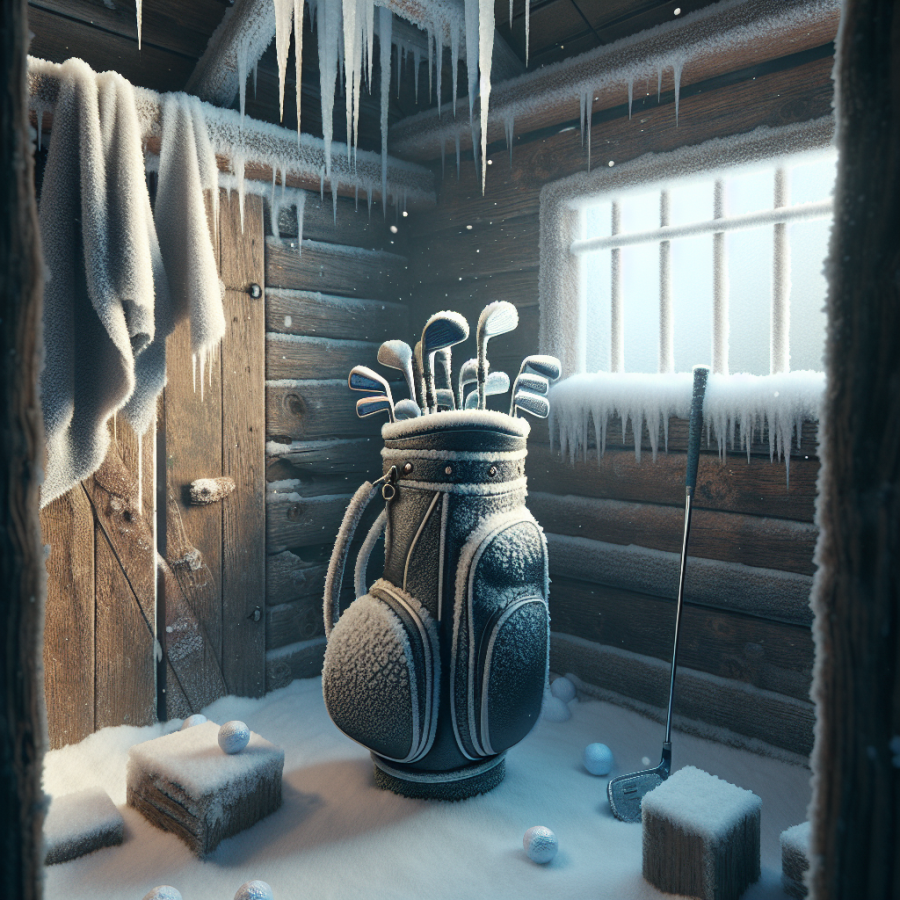Essential Tips for Protecting Your Golf Clubs during the Winter Season
The winter season can present a few challenges when it comes to maintaining the state of your golf clubs due to the significant changes in temperature and humidity levels. If not protected properly, these conditions can negatively affect your golfing equipment. Therefore, it's essential to understand how to protect your golf clubs during the chilly season.
One of the primary concerns is the impact of cold weather on the material used to produce your golf clubs. Most golf clubs are made of steel or graphite, and these materials can become brittle and lose their flexibility when subjected to freezing temperatures. This can influence their performance by changing the trajectory of the golf ball and reducing your hitting distance.
The first essential tip to protect your golf clubs is to manage where you store them. Avoid leaving your golf clubs in the trunk of your car or in a shed outside during the winter, even when enclosed in a golf bag. Extreme cold could cause the glue that holds the clubhead on the shaft to become brittle and crack, leading to a weakened joint and a potentially ruined club. Instead, keep your clubs in a temperature-controlled environment, like an indoor closet.
Secondly, consider investing in head covers. Even though most golfers use them only for their woods and putters, having head covers for your iron can help keep them safeguarded against scratches and dings that could happen during non-use times such as winter.
Also, remember to clean your golf clubs before stowing them away for winter. Remove any dirt or grass in the grooves of your clubfaces. Dry them thoroughly to avoid any moisture that might cause rust. A clean club is not just about aesthetics, but it also prevents any autumn grime from solidifying and becoming more troublesome to clean after a few months.
To maintain the grip of your golf clubs in top condition, wipe them down with a warm, soapy water mix, rinse, and dry them thoroughly before storing. You can also apply grip lotion specifically designed for golf grips to keep them from drying out during the winter.
Next, take this opportunity to inspect your clubs for any wear or damage. Look for any cracks in the shaft, worn out grips, or loose parts. Catching these issues early will give you plenty of time to get them repaired before the golf season starts again.
Lastly, consider storing your golf clubs in a standing position. This maneuver helps to relieve any tension or stress on the shafts that may be caused by leaning or stacking them sideways for extended periods.
Read also:
Converting Acreage into Soccer Fields: The Numbers Game
Understanding the Effects of Cold Weather on Golf Club Performance
As any seasoned golfer knows, the weather can have a significant impact on the game, and cold temperatures are no exception. Understanding how cold weather affects golf club performance is vital, as it can change the dynamics of your game significantly. Here's a look at the critical ways in which freezing temperatures can affect your clubs and, ultimately, your performance on the course.
Changes in Ball Flight
One of the most noticeable effects of cold weather on golf clubs is the impact on ball flight. Cold air has a higher density than warm air. This increased air density leads to greater friction between the ball and the air molecules, resulting in less lift and a slower speed for the ball. As a result, in cold weather, golfers might notice that their shots don’t carry as far as they usually do in warmer conditions.
Effects on the Physical Properties of Golf Clubs
Golf clubs are often made from substances like steel or graphite, which can contract in cold weather. This contraction can potentially alter the flexibility of the club shaft, leading to changed swing mechanics and ball contact. More rigid clubs in cold weather might decrease the power delivery during impact.
Impact on Golf Balls
Moreover, it’s not just the clubs that are affected by the cold; golf balls also behave differently in lower temperatures. When cold, the materials that make up a golf ball can become harder and less responsive. This makes the ball less compressible on impact, leading to reduced spin and ultimately less distance.
Effect on Golfers’ Grip
Golfers' grip on the club can also be affected by cold weather. The hands may not function as well in freezing conditions, leading to a poorer grip.This can result in decreased control over shots, which could potentially increase the chance of mishits and misdirected ball flight.
Slower Swing Speeds
Cold weather also tends to make your body tighten up, which makes it harder for golfers to maintain their usual swing speed. As a result, swing speed can decrease in cold weather, a factor likely to reduce the distance a ball travels substantially.
In conclusion, golfers should consider the impacts of cold weather on their golf clubs and adapt their game accordingly. This might mean switching out equipment, changing techniques, or simply being aware of the effects of cold on their performance. Don’t forget to keep your club and balls warm if possible, and always factor in the temperature when you’re planning your shot.




